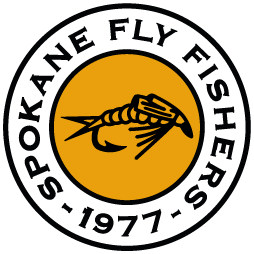Thomas McGuane. I’ve stated, in prior reviews, that I thought Thomas McGuane was the finest fishing writer out there. Yet, he is so much more. He has written novels involving hard-life types from his home state of Montana, as well as hisbeloved Florida Keys. He is also an accomplished short-story author, with collections involving characters of a similar nature to those in his novels. He has also written non-fiction over subjects such as horses he has known and loved in his life. Luckily for we who enjoy fishing reading, he at times turns his skills to writing about that topic. The Longest Silence is a collection of essays regarding his pursuit of fly fishing around the world, but most especially in Montana and other locations in North America.
It was once said that, in baseball, Sandy Koufax pitched in a higher league. For me, Thomas McGuane writes at a higher level. I find myself, at times, re-reading sentences and paragraphs to catch the full flavor and meaning of what is said. A single sentence can be laced with subtle humor as well as keen observation, while setting tense anticipation for what might come later.
He writes, thusly, about a girl he encountered during a trip to Ireland:
“When I came in that evening, I returned the wave of an ardent and heavily made-up young woman with unnatural blond hair, rather a beauty but profoundly influenced by the latest Carnaby Street fashions. From time to time she appeared in a burst of enthusiasm and ill-concealed carnality… I saw her waving from …the nave of the thirteenth-century church of Saints Peter and Paul, in ruins but the final resting place of Gaelic poets. Finally, I saw her cavorting with an entire hurling team from Blossom’s Gate…”
Virtually all McGuane’s fly-fishing stories are laced with such asides. I’ve read no other outdoor writer who possesses his vocabulary and the ability to use it in such a way that the story is enriched without distraction.
Oddly, the reader will occasionally encounter a factual miss-step that will momentarily bring one up short. For example, he writes mistakenly of the “harrier losing it’s winter white” in “Spring.” Harriers do not change colors with the seasons, as do, say, weasels or snowshoe hares. Adult male harriers are of a light gray, year around, which might pass as white in certain light. Meanwhile, females retain a brownish-grey throughout their lives. Thus, it’s possible one could see the two color phases at different times of year and deduce that they molt with the seasons. Also, he writes of his experiences at San Francisco’s venerable Golden Gate Angling and Casting Club, in Golden Gate Park in 1966, which he labels “The Summer of Love.” As one who was present there during that summer (and who survived!), I can tell you the Summer of Love was in 1967. Encountering such inaccuracy by an author so observant is momentarily startling. Which, of course, in no way harms the reading experience…
In more than one place, McGuane decries what he apparently sees as pseudo-sophistication or the mystique some attach to fly-fishing. He ends the chapter “Runoff” with a paragraph that states “…like “military intelligence” and “airline cuisine,” “sophisticated angler” is an oxymoron. And if it wasn’t, it would be nothing to strive for. Angling is where the child, if not the infant, gets to go on living.” One wonders if McGuane is aware that the level of his own writing contributes mightily to those impressions he challenges? Yet he, himself, recognizes that fly angling is so much more than just striving to catch fish. Such as this clip from his opening remarks at the front of the book, describing his feelings after a friendly encounter with a bait fisherman on an Oregon stream:
“If fly fishermen have an edge in this elaboration of the soul that we resent hearing called a sport but are too timid to call an art, it is our willingness to deepen the experience at nearly any personal cost. This is why we tie flies, not to save money through bulk purchase of hooks and feathers. This is why some of us cannot live without the breath of varnish from the rod tube when we rig up for another holy day. The motto of every serious angler is “Nearer My God to Thee.” Humans have suspected for thousands of years that angling and religion are connected. But if you can find no other ideal than out fishing your buddies, catching something big enough to stuff, or winning a trophy, you have a lot of work to do before you are what Izaak Walton would call an angler.”
McGuane, himself, treats lovingly with other fishing writers as Izaak Walton and Roderick Haig-Brown. Indeed, the chapter on Haig-Brown is the best of all the attempts by those who have tried to capture the essence of his contributions to northwest fly fishing. Such as: “For many who regard angling as the symptom of a way of living … the writing of Roderick Haig-Brown serves as scripture. He is a genuinely famous fisherman in an era when famous fishermen scramble to name flies and knots after themselves with a self-aggrandizing ardor unknown since the Borgia Popes.”
Our SFF Library is fortunate to have a copy of The Longest Silence. Borrow it and treat yourself to fly fishing journeys to locations such as Ireland, Iceland, and North America, that are richly described in the lovely, stimulating prose that is unique to Thomas McGuane.
